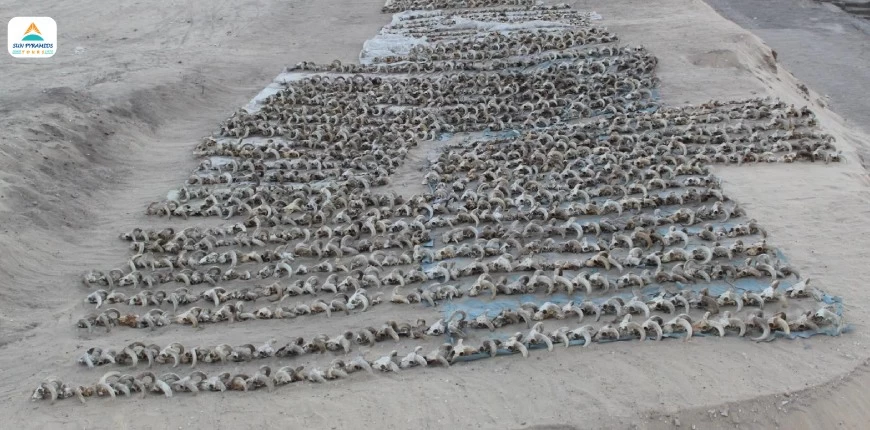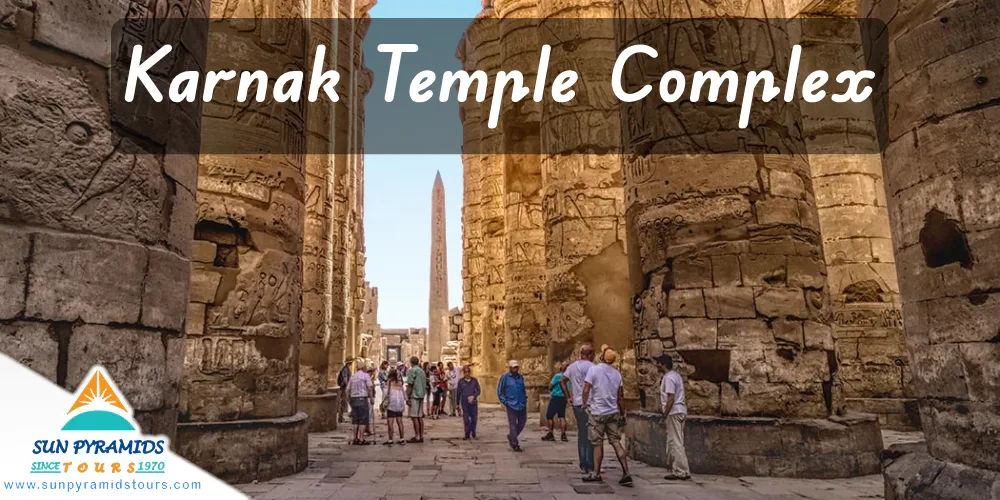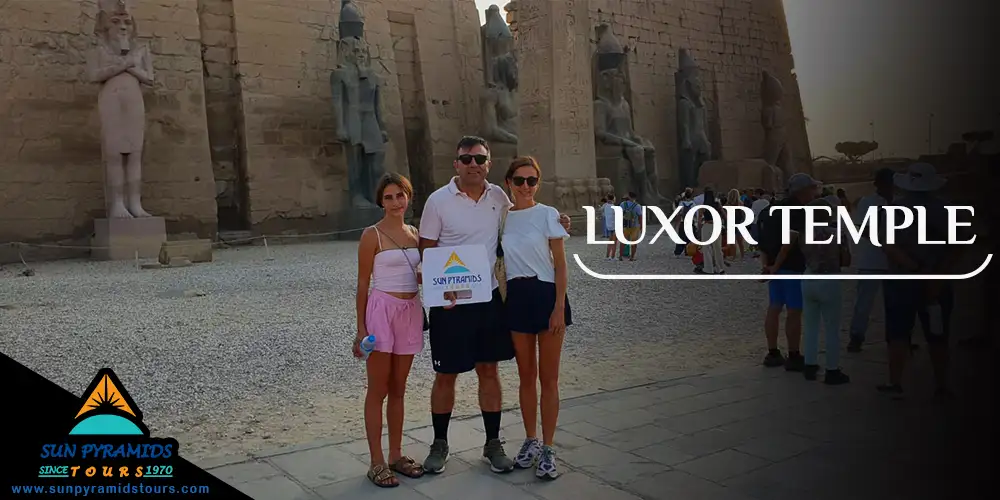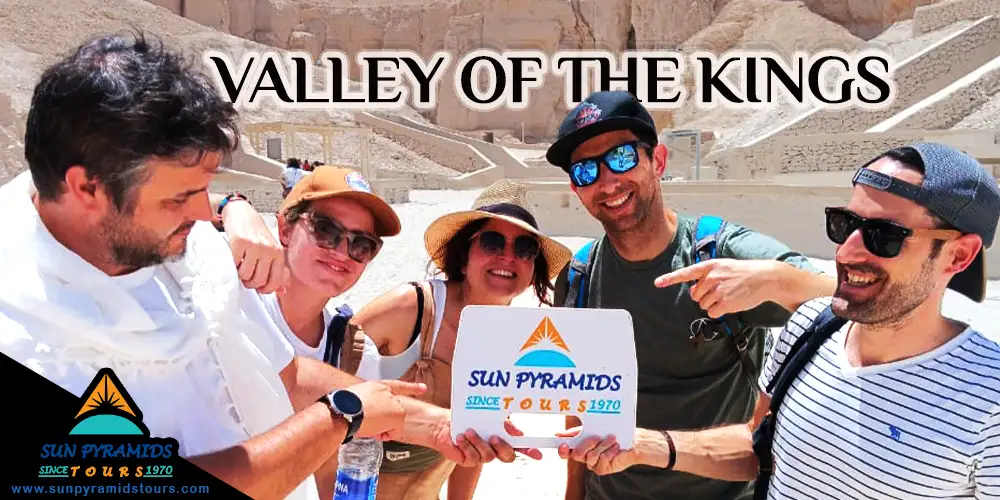Temple d'Abydos
Abydoss est devenu un trésor archéologique important en Égypte. Il abrite le cimetière royal de l’époque prédynastique, qui a dévoilé des liens intrigants avec la Sumérie. De plus, il abrite l'Osireion, une mystérieuse chambre souterraine reliée au Nil, construite à partir de blocs massifs. Le style architectural de ces blocs n'a d'équivalent que celui du temple de la vallée de Gizeh. Plus tard, le temple de Seti Ier de la VIe dynastie, dont l'origine est sans doute antérieure, fut construit au sommet de ce site. Où se trouve le temple d’Abydos et comment s’y rendre ? Le temple d'Abydos est situé dans la ville d'Abydos, qui était autrefois une ville sacrée importante et une nécropole pour la première royauté égyptienne. Abydos était également un centre de pèlerinage pour vénérer Osiris, le dieu de l'au-delà, qui aurait été enterré là-bas. Pour rejoindre Abydos depuis Louxor, vous pouvez prendre une voiture privée ou un taxi, ce qui prendra environ deux heures et demie. Alternativement, vous pouvez participer à une visite guidée qui comprend le transport et les frais d'entrée avec Sun Pyramids Tours. Contactez-nous pour plus d'informations. Vous pouvez également combiner votre visite à Abydos avec un autre temple voisin, comme Dendera ou Karnak . Le temple de Séthi Ier (1 307-1 291 av. J.-C.) (La maison des millions d'années) On considère qu'elle a été construite vers la fin du règne de Seti. Séthi Ier , deuxième roi de la XIXème dynastie, était le fils de Ramsès Ier et de la reine Sitre. Il se réconcilie avec les Hittites, qui deviennent l'État le plus puissant de la région. Séthi Ier et son héritier, Ramsès II, firent campagne contre Kadesh. A Karnak, il complète le projet de son père en transformant la cour située entre les deuxième et troisième tours en une vaste salle hypostyle. Il construisit son vaste complexe mortuaire à Abydos. La structure renommée qui existe aujourd'hui est souvent appelée le Grand Temple d'Abydos . Les reliefs élevés de ce splendide temple sont parmi les plus beaux de toute l'Égypte. Ce temple présente un design unique, ressemblant à un « L » inversé. Il abrite également les listes les plus complètes de rois et de dieux. Le Temple abrite sept sanctuaires dédiés à 7 dieux : Osiris, Isis, Horus, Amon Ra, Ra HorAkhty, Ptah et Seti I en tant que roi déifié. Dans ce temple, on peut trouver les reliefs peints et les textes les mieux conservés de la XVIIIe dynastie. Sept chapelles ont été construites pour le culte du pharaon et des divinités primaires. À l'arrière du temple se trouve une structure mystérieuse connue sous le nom d'Osirion, considérée comme associée au culte d'Osiris, et probablement à partir de ces chambres s'étendait le grand hypogée pour la célébration des mystères d'Osiris, construit par Mérenptah. Le temple de Seti I gagne également une réputation grâce à ses sculptures uniques découvertes sur l'une de ses poutres de plafond. Ces gravures ont suscité un intérêt considérable dans le passé en raison de leur ressemblance frappante avec les véhicules contemporains. Cependant, il a été proposé qu'ils pourraient être le résultat de hiéroglyphes superposés, qui, malgré leur rareté, semblent plausibles lorsqu'on examine le reste du faisceau. La construction du temple de Seti Ier a eu lieu bien plus tard que l'Osireion : on pense que Seti Ier a été guidé pour construire sur ce site et qu'il a ajusté la direction du temple après avoir découvert l'Osireion. Cependant, l'alignement des deux temples suggère qu'il connaissait probablement l'existence de l'Osireion lorsqu'il a initié la construction de son temple. L'Osireion (le puits de Strabon, la fontaine des Abydos) Lorsque Séthi-Ier lança la quête d'un site pour son temple, il fut guidé vers un endroit au nord de Louxor, dans la courbe du Nil. Ici, il a commencé à creuser les fondations de son temple. Au cours de ce processus, il tomba sur l'Osireion, l'ancien temple d'Osiris. Qu'il soit au courant de l'existence de l'Osireion reste un mystère, mais après avoir rencontré cet ancien temple sur le chemin de son nouveau temple, il a redirigé son nouveau temple vers la gauche. Ce temple est le seul en Égypte à prendre une tour en « L ». La structure présente des disparités architecturales notables par rapport au temple situé au-dessus et est présumée être considérablement plus ancienne. Il présente plusieurs ressemblances avec le « Temple de la Vallée » de Gizeh, qui est également reconnu comme un édifice du début de la dynastie. À ce propos, il convient de noter que le temple Osireion est consacré à Osiris, tandis que le « temple de la vallée » de Gizeh est lié à Isis. Pour l’instant, nous ne disposons d’aucune indication sur la date de construction. Cependant, la conception, l’ampleur des matériaux et l’absence totale d’ornementation suggèrent une origine très ancienne. Jusqu'à présent, le temple dit du Sphinx à Gizeh a toujours été considéré comme l'une des structures les plus anciennes d'Égypte. Il est contemporain de la pyramide de Chefren… Compte tenu de sa composition similaire mais de matériaux beaucoup plus grands, le réservoir d'Abydos présente un caractère encore plus archaïque, et il ne serait pas étonnant qu'il s'avère être la structure la plus ancienne d'Égypte. Qui était Dorothy Eady (Omm Sety) et quel était son lien avec le temple d'Abydos ? L’une des histoires les plus fascinantes sur le temple d’Abydos est celle de Dorothy Eady (1904 – 1981), également connue sous le nom d’ Omm Sety ou Om Seti, qui était une gardienne britannique d’antiquités et une folkloriste. Elle a été la gardienne du temple d'Abydos de Seti I et a travaillé comme dessinatrice pour le Département des antiquités égyptiennes. Elle est devenue célèbre pour sa conviction d'avoir été prêtresse dans l'Égypte ancienne dans une vie antérieure et pour ses recherches historiques approfondies menées à Abydos. Sa vie et ses contributions ont fait l'objet de nombreux articles, documentaires télévisés et ouvrages biographiques. Selon John A. Wilson, feu directeur de l’Oriental Institute et considéré comme le « doyen de l’égyptologie américaine » par ses pairs, estimait qu’Omm Sety méritait d’être reconnu comme « un érudit responsable ». Elle a servi de ressource pour les études contemporaines visant à comprendre comment les anciennes coutumes religieuses traditionnelles ont perduré jusqu'à nos jours, se manifestant par des « coutumes populaires » observées par les coptes et les musulmans égyptiens modernes. Contrairement à d’autres qui prétendaient être des entités réincarnées de l’Égypte ancienne, les égyptologues lui accordaient le respect. Même si aucun d’entre eux n’a publiquement approuvé les phénomènes qu’elle a décrits, aucun n’a remis en question son honnêteté, et nombreux sont ceux qui ont utilisé ses idées sur l’Égypte passée et présente comme source d’information crédible. Temple de Ramsès II Le temple voisin de Ramsès II, bien que plus petit et de conception plus simple, présentait à l'extérieur une remarquable série historique de scènes célébrant ses réalisations, les parties inférieures étant toujours intactes. L'extérieur du temple était orné de représentations de la bataille de Kadesh. Une liste de pharaons, semblable à celle de Seti Ier, se trouvait autrefois ici ; cependant, les fragments furent acquis par le consul de France et vendus au British Museum. Les deux premières rangées de la liste comportent les noms des rois, tandis que la troisième rangée répète le nom du trône de Ramsès II. Quels sont les horaires d’ouverture de Temple d'Abydos Les horaires d’ouverture du Temple d’Abydos sont les suivants : Tous les jours de 7h à 18h Pourquoi dois-je réserver avec Sun Pyramids Tours 1) Expertise et expérience : Sun Pyramids Tours possède une richesse de 53 années d'expérience dans l'industrie du voyage et du tourisme. 2) Itinéraires personnalisés : Sun Pyramids Tours propose des itinéraires sur mesure adaptés à vos préférences. Que vous soyez intéressé par les sites historiques, l'immersion culturelle ou les activités d'aventure, nous pouvons concevoir un circuit qui correspond à vos intérêts. 3) Connexions locales et accès privilégié : Sun Pyramids Tours peut vous offrir des opportunités uniques et un accès privilégié à des attractions et des expériences qui peuvent ne pas être facilement accessibles aux voyageurs indépendants. 4) Planification sans tracas : Sun Pyramids Tours peut éliminer le stress lié à la planification de votre voyage. Nous nous occupons de toute la logistique, y compris l'hébergement, le transport et les visites guidées, à des prix compétitifs… Détendez-vous et profitez de vos vacances sans vous soucier des détails. 5) Satisfaction du client : Sun Pyramids Tours est fier de fournir un excellent service client et d'assurer la satisfaction du client. Ils s'efforcent de répondre et de dépasser vos attentes, rendant votre voyage agréable et mémorable. Ajoutez des avis sur Trip Advisor, des avis sur la page Facebook, etc. 6) Sûreté et sécurité : Sun Pyramids Tours donne la priorité à la sûreté et à la sécurité de ses clients. Nous travaillons avec des partenaires de confiance, adhérons aux consignes de sécurité et vous fournissons une assistance tout au long de votre voyage pour garantir une expérience de voyage sûre et confortable.
En savoir plus



